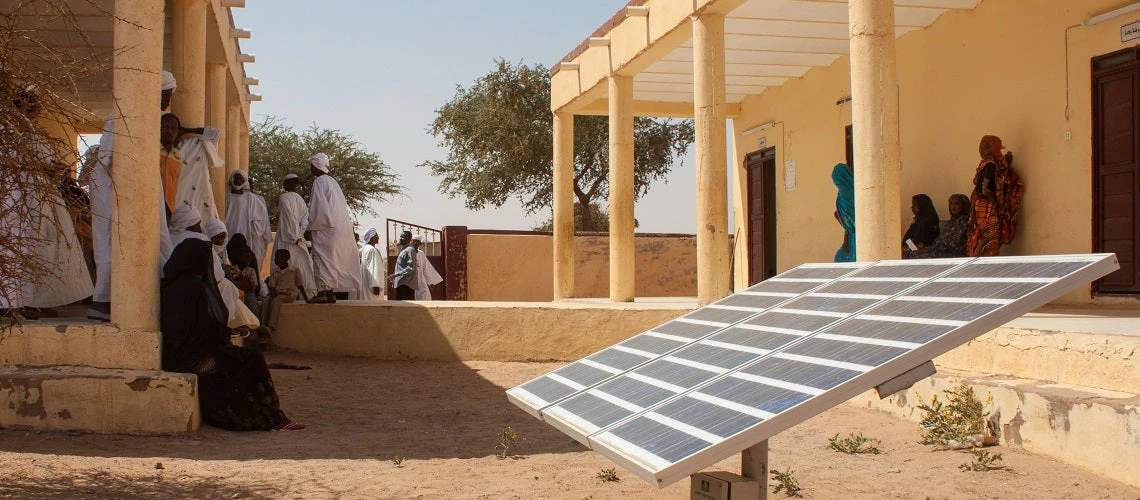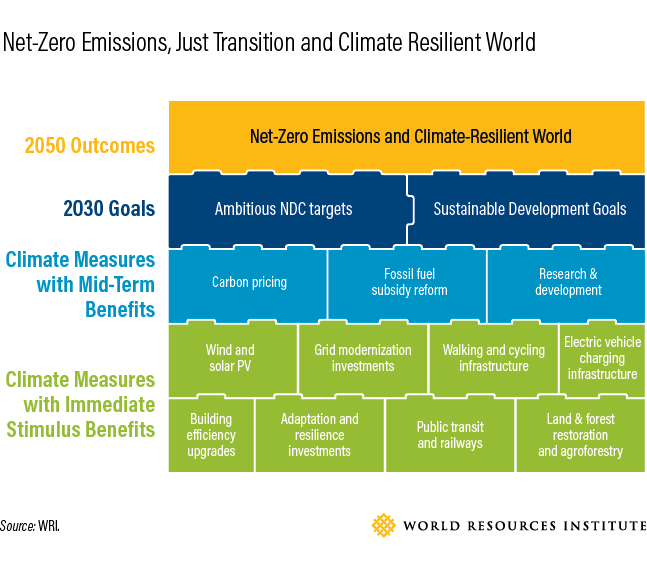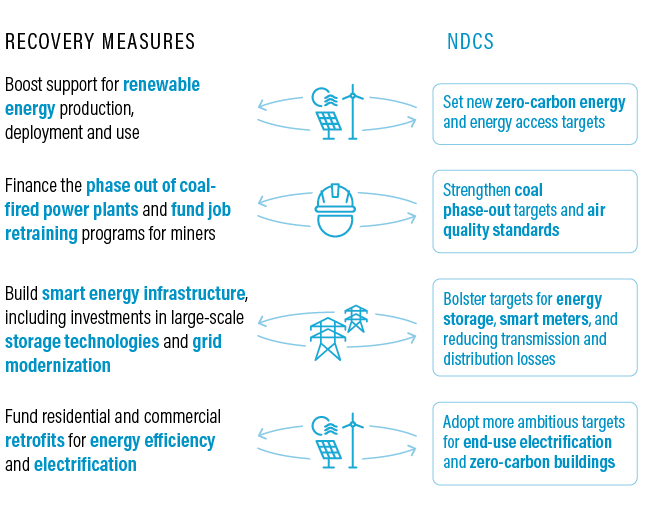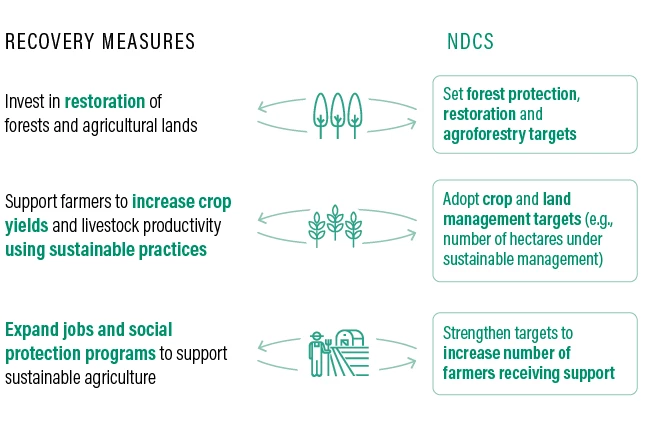 Solar panels at the Tenna Health Center in North Kordofan State, Sudan
Solar panels at the Tenna Health Center in North Kordofan State, Sudan
As 2020 began, the question of whether and how countries would strengthen their commitments under the Paris Agreement loomed large — until the rapid spread of the COVID-19 pandemic took center stage. Governments are understandably focused on immediate recovery from the health, economic and employment consequences of the pandemic. But the urgent need to keep global temperature change below 1.5 degrees C remains, so many countries are also continuing to strengthen their climate action, including through enhanced nationally determined contributions (NDCs) under the Paris Agreement.
COVID-19 recovery and NDC have different goals — revitalizing economies in the immediate term on the one hand, and setting targets to address climate change on the other. But COVID-19 recovery plans and NDCs are also building blocks in the same larger structure. A green and resilient recovery can help pave the way for NDC commitments that will cut emissions and build resilience to climate impacts. And together, recovery and NDCs can serve as critical levers for putting us on track to seize the tremendous economic benefits from climate action, limit the most dangerous impacts of climate change, and build an equitable economy that is more resilient to future shocks like COVID-19.
Distinct Functions of Green Recovery Plans and NDCs
To adopt a building blocks approach, governments must understand the distinct roles of recovery and NDC enhancement. While there are overlaps across many sectors, policymakers should not harbor the illusion that green recovery measures alone will adequately address climate change. Without the direction of travel provided by broader climate commitments, many recovery plans could lock-in outdated, unproductive economic paths through bailouts for high-carbon sectors and industries or regulatory rollbacks. But good recovery plans will lay the groundwork for more ambitious NDCs aimed at 2030, which themselves can propel long-term investments in a low-carbon, resilient direction.

The World Bank’s Sustainability Checklist proposed potential criteria for policy makers to consider as they assessed stimulus proposals. In doing so, interventions such as direct investment in clean energy, sustainable transport and nature-based solutions would not only deliver they on the near-term recovery needs of economic revitalization and job creation, but also on longer term goals of resilience and decarbonization. Other long-term investments such as in R&D or the reform and redirection of fossil fuel subsidies are also important engines of future economic growth to ensure that the economy won’t fall off a cliff once the initial stimulus ends.
Along with long-term low-emissions development strategies, which extend to 2050, NDCs look beyond the immediate time horizon of the economic stimulus and chart a course toward decarbonization and long-term climate resilience. Under the Paris Agreement, countries are also expected to update NDCs every five years, which not only provides a pathway to increased ambition but also enables countries to seize the technological and economic shifts underway.
Where COVID-19 Recovery and NDC Enhancement Intersect
As detailed in this recent WRI publication, here is a snapshot of actions in four sectors – along with concrete country examples – pointing to opportunities for a double win for a green recovery and climate ambition.
Power

Many countries have already announced these types of investments as part of their recovery plans. For example, Nigeria’s COVID-19 stimulus package includes $619 million for a project that aims to provide access to solar and mini-grids for five million households without power. The United Kingdom, meanwhile, announced $3.7 billion to support energy efficiency improvements, including subsidies to homeowners and landlords to make their homes more energy efficient and funding for energy efficiency and low-carbon heat upgrades in public buildings.
Transport

Germany is one country that announced support for many of these actions in its recovery plan. Its stimulus package includes $17.77 billion of investments in climate-friendly transportation, including railways, public transport, EV chargers and subsidies, bus and truck fleet modernization and sustainable shipping and aviation.
Nature-Based Solutions, Sustainable Agriculture and Rural Livelihoods

Some countries are already taking some of the above-mentioned actions. India, for example, channeled $792 million toward an afforestation program designed to stimulate the rural and semi-urban economy while providing essential ecosystem benefits. Other countries like Pakistan, Germany and New Zealand have made similar investments in nature-based solutions. Following the Great Recession, U.S. stimulus spending on coastal habitat restoration created 17 jobs per $1 million in the short term, more than a similar amount spent on fossil fuel industries would have.
Advancing a Just Transition
To meet the goals of the Paris Agreement and achieve core social and economic goals, countries must phase out carbon-intensive sectors and industries and ensure a just transition for affected communities. Recovery plans and NDCs could prioritize workers. The European Union’s recovery package, for example, includes a substantial investment in just transition policies that will enable workers and affected communities to shift from jobs and economies based in fossil fuel production and use, especially coal, to other employment and economic opportunities.
For sectors such as aviation or automobiles, rescue schemes could, respectively, be conditional to a net-zero emissions trajectory and accelerate the shift toward EVs. Some countries are already taking such action: As part of France’s bailout for Air France, the company must reduce its emissions per passenger-kilometer by 50% by 2030, and France’s support for its auto industry focuses on making it a leader in clean vehicle manufacturing.
To maximize the potential of transformative action at this critical moment, governments and financial institutions must recognize and act on the ways in which the goals of both recovery and NDC enhancement can be effectively reached in tandem. This is the only way for the world to build back better and launch ourselves on the path toward a prosperous, low-carbon future.




Join the Conversation